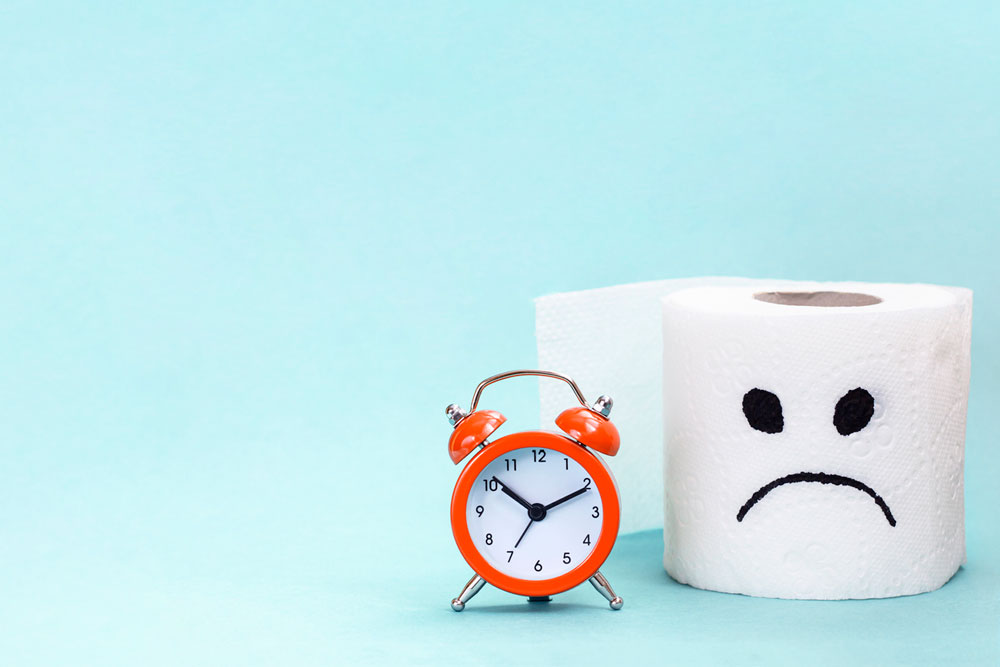Laxatives: What You Need to Know

Constipation is a very common gastrointestinal condition, affecting about 42 million Americans, or 15% of the population. Constipation is a growing issue in America. Situations that place people at risk for acute constipation include imposed immobility, a change in toileting habits, dietary changes (whether self-imposed by dieting or for medical reasons), medications and stress.
The most common predisposing factors for chronic constipation include advanced age, being female, poor fluid and dietary intake, cognitive or functional impairment and ongoing privacy issues, Opioids are among the major medications that predispose patients to constipation.
When you are constipated, finding relief is the first thing on your mind. Laxatives can help evacuate the bowel and clear constipation. There are a lot of different products available, and knowing which one is right can be confusing. Which product works best for your particular situation? What are the potential risks and side effects of each type of medication?
Note: it’s important to consult a physician before using any constipation medication.
Acute vs. Chronic Constipation
Which laxative to use depends primarily on whether you have acute or chronic constipation, and whether you intend to use it for occasional constipation or regular bowel care. Acute constipation is short-term, doesn’t last more than a few days, and can generally be relieved by OTC (over-the-counter) medications and minor lifestyle changes. Chronic constipation is long-term and can continue for months or even years. It is disruptive to a person’s personal and/or professional life and can’t be relieved by minor changes in lifestyle. Chronic constipation should be diagnosed and treated by a physician.Lifestyle Changes
Lifestyle changes are another common cause of constipation, so it’s important to evaluate any diet and/or habit changes that should be addressed, including:- Insufficient Fluids: Water and other non-diuretic fluids keep the digestive tract moving properly and promote healthy bowel movements. Lack of proper hydration slows the stool movement through the bowel and can cause constipation.
- Amount of Physical Activity: Insufficient or reduced exercise and spending large amounts of time sitting and/or lying down can increase constipation risk. This problem particularly applies to people with health conditions or injuries that require them to be immobile.=.
- Changes in Routine: When bowel movements do not occur on a regular basis, or the urge to have a bowel movement is ignored, stool builds up in the bowel and leads to constipation. For people who travel a lot, or who do not have a regular routine, this is especially common.
- Reduction in Fiber: The ingestion of fiber helps retain water in the intestine, making stools easier to pass. With insufficient fiber intake, stool become dry and harder to pass.
Types of Laxatives and How They Work
Laxatives relieve constipation by loosening stools and/or inducing a bowel movement. Laxatives come as pills, capsules, liquids, suppositories, and enemas. Over-the-counter laxatives are designed for short-term or occasional use. Use only as directed. Ongoing constipation should be evaluated by a healthcare provider. There are several different categories of laxatives. Laxatives may be taken orally, as tablets or liquids, or rectally as suppositories or enemas. Most oral laxatives take days to produce results, while most rectal dose forms are relatively quick acting. Because different things can cause constipation, different laxatives work in different ways to resolve your constipation. Some work on your stool, some work on your intestine, and others work on both your stool and intestine, but all are employed to relieve constipation. Some may be a better choice for you than others, though, depending on how long you need to use them and how harsh the ingredients can be on your body. Here we break down what you need to know about the different types of laxatives.- Emollient Stool Softeners: Emollient laxatives contain the active ingredients docusate sodium and docusate calcium. Stool softeners work by hydrating and softening stool, making it easier to pass, and are considered to be gentle and well-tolerated.
- Lubricant: Lubricant laxatives contain mineral oil, which coats stool to help it move more easily through the intestine, and also coats the intestines to help prevent water loss from the stool. Mineral oil is not for use on a regular basis. It can interfere with your body’s absorption of fat-soluble vitamins, such as vitamins A, D, E, and K. Lubricant laxatives are typically used for more immediate relief of short-term constipation. Mineral oil can have serious side effects with certain medications and can negatively impact absorption of Vitamin K.
- Bulking Forming: Bulk forming laxatives contain the active ingredients psyllium, methylcellulose, and calcium polycarbophil, and work by forming a gel in your stool that helps it hold more water. Stool increases in volume as a result, triggering the intestine to pass stool more quickly. Bulk forming laxatives may be helpful for conditions such as irritable bowel syndrome diverticulosis, and colostomies. When using bulk forming laxatives it is essential to drink plenty of fluid for maximum results.
- Hyperosmotic Laxatives: hyperosmotic laxatives contain the active ingredients polyethylene glycol and glycerin, which draw more water into your intestines. This helps soften the stool to help it move more easily through the intestinal tract.
- Saline Laxatives: Saline Laxatives contain the active ingredients magnesium citrate and magnesium hydroxide, which draws more water into the intestine, softening stool and stimulating movement in the intestines. Saline laxatives should not be used on a regular basis. When used regularly, they can cause dehydration and electrolyte imbalance.
- Stimulant Laxative: Stimulant laxatives contain the active ingredients such as bisacodyl or sennosides, and work by stimulating the bowel and increasing movement in the intestines. Despite the quicker results, stimulant laxatives come with many unpleasant side effects and should not be used on a regular basis as they can cause dehydration, electrolyte imbalances, bloating, gas, and abdominal pain.












